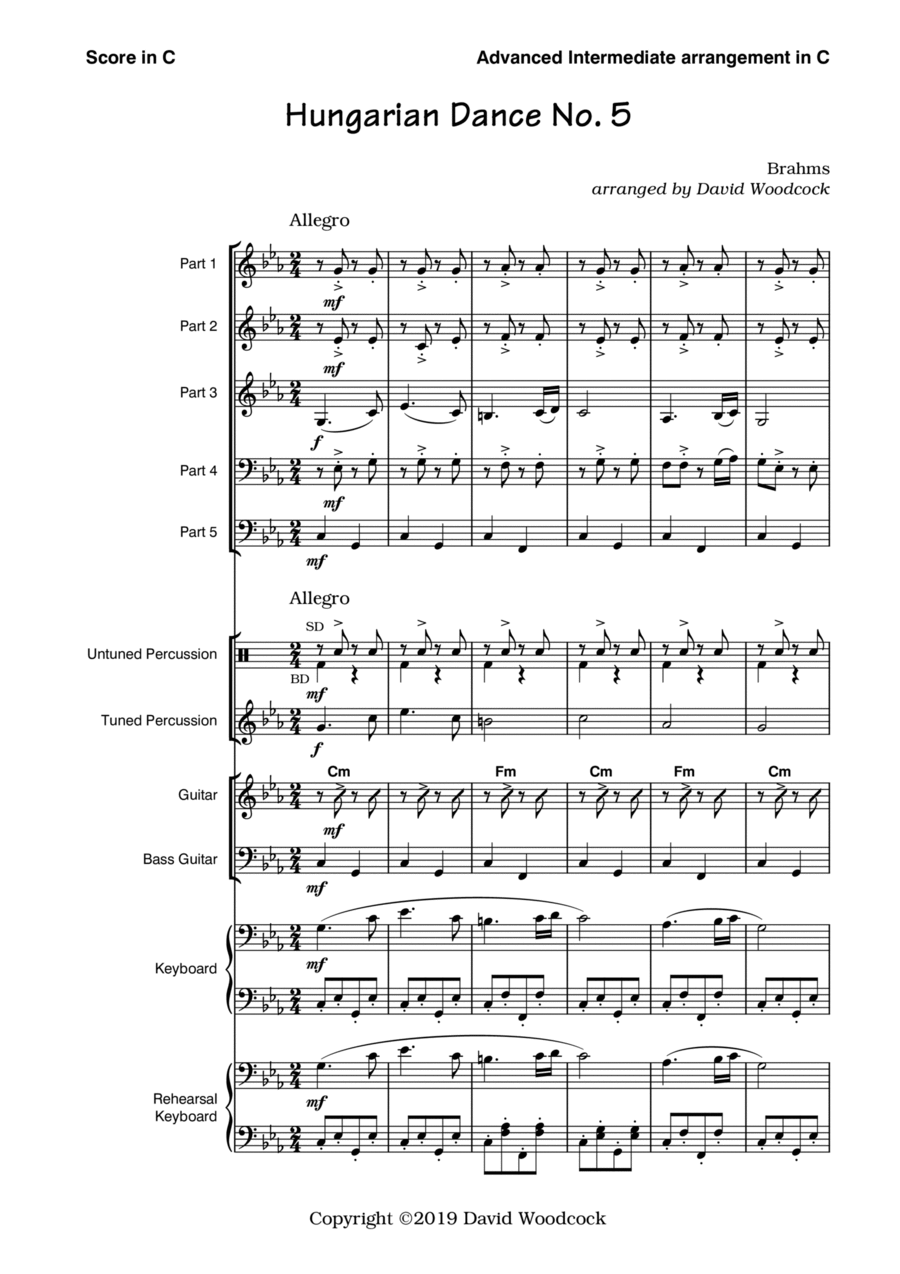Acoustic Guitar,Bass Clef Instrument,Bass Guitar,Drums,Electric Guitar,Keyboard,Treble Clef Instrument - Level 4 - Digital Download SKU: A0.1394035 Composed by Johannes Brahms. Arranged by David Woodcock. 19th Century,Classical,Instructional. 68 pages. David Woodcock #977491. Published by David Woodcock (A0.1394035). This is an arrangement of the famous work, scored for flexible ensemble in C. It is also available in A. This series has been specifically designed to meet the requirements of the ever-changing ensemble combinations that primary and secondary schools and other instrumental ensembles face. Because certain instruments are more comfortable in playing in certain keys, each work will be offered in two keys. This should allow for the music director to choose the key most suitable for the instrumental combination. Each piece consists of five core instrumental parts: 2 treble, 1 alto, tenor and bass. All parts will have a number of transpositions suitable for the instruments that are capable of playing those parts, eg, Part 2 will have parts for violin, B flat clarinet and trumpet, and E flat alto sax.  This will save music directors' time in having to write out additional parts. Optional parts are included for tuned and untuned percussion, guitar (chords) and bass guitar (notation and TAB), a keyboard part appropriate to the difficulty level, and a rehearsal piano part which is a fuller realisation of the piece and could be played by a more advanced student or the music director. If the numbers of players on each part allows, the music director can feel free to 'solo' instruments and vary the orchestration, especially on repeats, to create variety in instrumental colour.
